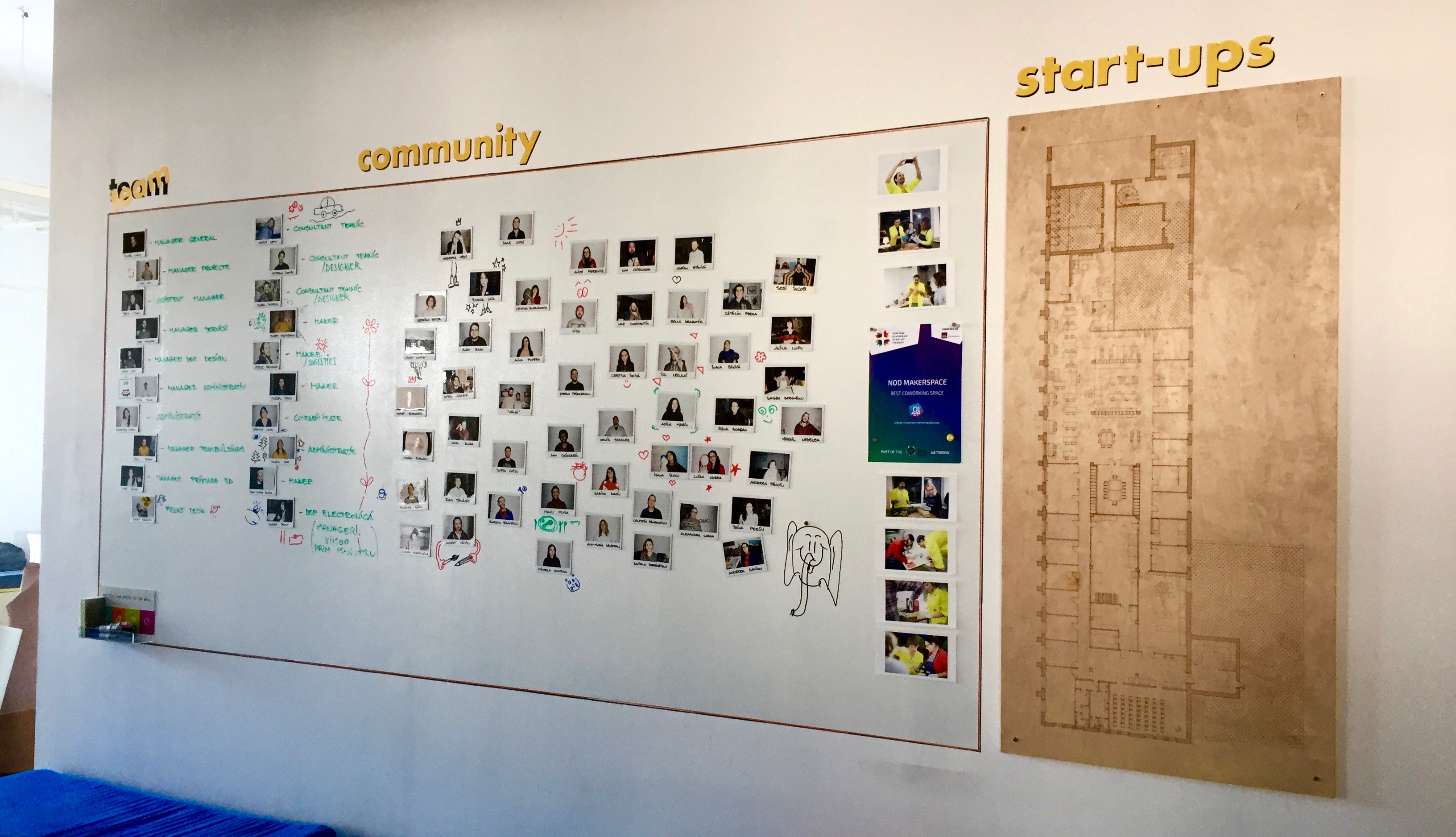As I flash my torch up the dark steps and make my way up to my apartment, I can’t help but think that the Soviet legacy is more evident here in Bucharest than in any of the other Eastern European cities I have visited so far. It is only 4:30pm, and it is still light outside (a happy realisation after months of traveling in more Northern places where the sun has set by now), but the staircase is lit neither by natural nor artificial light. I suppose the windowless gloom is classic of Soviet buildings, and I’m told the broken bulb hasn’t been replaced because nobody thinks it’s their responsibility; a classic of Soviet thinking.
Over the past few weeks I have been making my way through Poland, Hungary and Romania, and Bucharest is my final stop in Eastern Europe. In fact, it’s my final European stop; soon I will be flying back to the UK and then my next leg of travel will take me far away to Southeast Asia. It has been a long and eventful journey, traveling from one side of Russia to the other; joining 17,000 other innovators for Slush in Helsinki; feeling the pre-Christmas cheer in Estonia and Latvia; being in Berlin when that cheer was attacked by terrorists; experiencing the coldest winter in Poland for years, where -20°c temperatures killed 10 people in two days; taking night trains from Kraków to Budapest and on to Brasov to experience the rich history of Transylvania; and finally here to Bucharest, where I am watching tumbling flocks of birds ride the swirling currents above the world’s second largest building – the infamous Palace of Parliament, an unavoidable marker of the Soviet legacy.
 Palace of Parliament, Bucharest
Palace of Parliament, Bucharest
Since I took the ferry from Donghae in South Korea to Vladivostok in Far East Russia at the end of October, almost all of the countries I have visited have experienced the suffocating influence of the USSR. Painful memories are etched into the landscapes and the architecture across Eastern Europe. But what about the impacts that are less physically evident? I have no desire to overplay the impact of the USSR on these countries – they are vibrant, unique places with cultural values that held strong despite oppression. For too long they have been thought of as ‘ex-Soviet’ and it does them a disservice. However, to understand the present state and future opportunities for a country, you must understand its past. As I have travelled through amazing cities and spoken with many insightful people, I have been fascinated by the influence – both positive and negative – of Soviet policies on technology and innovation across the former Eastern Bloc. So let’s talk about a few of them.
Openness
One of the cultural traits that I study is openness – the willingness for innovators to share their ideas with others, network and form a collaborative ecosystem. It is my experience that openness is one of the most necessary cultural features of a successful ecosystem, without it you simply have businesses in isolation, and little chance for synergies to spark between different ideas. Openness is enabled by a number of things – confidence, access to a network of people, shared understanding (be that a shared language or set of terminologies) – but most fundamental is trust.
One of the most damaging cultural legacies of the Soviet era was the erosion of trust. In order for the Soviets to keep control of people’s private activities, many regions were saturated with so many informants that it was impossible to know who to trust. Attitudes are certainly changing across Eastern Europe, especially among the younger generation, but there is still a concern amongst founders that if they share their idea then someone will steal it. Vladivostok in Russia also suffers a parallel problem, that startups did not trust mentors who did not ask for money, because they were suspicious of their motives.
Tall poppy syndrome
While a lack of trust may cause startups to clam up about their ideas, a different cultural trait can cause business people to hide their successes. The communist ideology of collective working and equal circumstances meant that standing out in any way – good or bad – was a dangerous thing. Tall poppies could very soon find their heads knocked off. While this isn’t purely a Soviet legacy (there aren’t many cultures with the same reverence for success as the Americans), the threat of real harm did serve to amplify this trait in many cultures. The potential negative effects for an innovation ecosystem might be to reduce the visibility of role models, and to lower the amount of private investment being put back into publicly recognised projects.
Problem solving
In the charming city of Brasov, nestled in the mountains of Transylvania, there is a town square with a beautiful 15th Century town hall with a clock tower. During the Soviet times (when poor Brasov had the dubious honour of being renamed ‘Stalin’), a live televised event was held in that square, with the clock showing in the back of many shots. The (unofficial) problem was, that clock had been broken for quite some time. However, this was the USSR, where there were no problems. And so it was that for the whole of the televised broadcast, a man sat on the roof by the clock and every minute, when the cameras looked away, he moved the hands on to the right time. Perhaps the first and only human clock mechanism.
 Brasov town square
Brasov town square
I’m not just telling this story because I find it charming. For me, it illustrates the diametrically opposed impacts the Soviet era had on problem solving. People soon learned that pointing out problems was a good way to make sure you got much bigger problems for yourself going forward. And it’s tough for problems to get fixed if they don’t officially exist. So that leaves two options: a) you live with problems (like the lightbulb in Bucharest); or b) you find your own ways around them (like human-powered clocks). And so the Soviet lifestyle bred two different groups – those who won’t try to fix anything because it’s not their job and they don’t want to get in trouble; and those who are ingenuous problem solvers who will always find a way around a problem when needed. Consequently, while innovation across society was damped down, the situation simultaneously served to amplify the innovative natures of certain individuals.
Market understanding
While there is this wellspring of excellent problem solving ability across Russia and Eastern Europe, it is not always applied effectively. Startup founders often struggle to understand product-market fit and will spend a lot of time and energy building a great solution, before realising it has no market. In part, this is down to a legacy of solving your own problems. Since there were officially no public problems to solve, you were typically solving just for your specific needs and situation. Another factor is that Soviet workers never needed to think about markets – they worked to quota and the destinations of goods were pre-determined. Entrepreneurship was even illegal during certain periods, and so these valuable business skills were not built.
The scientific legacy
Let’s end with one of the most significant positive impacts of the grand Soviet experiment – science. Say what you will about the regime, but they certainly did value the sciences. Of course, the scientific legacy has a much deeper history, especially in Russia and Poland, but Soviet policies served to systemise both the education and practical deployment of the sciences across the USSR. It served the aims of the regime to produce obedient, hard-working engineers, and the universities did an effective job of training people in strict engineering practices and rigorous scientific methods. Science cities were set up across the USSR, including the Institute of Cybernetics in Estonia, which helped to bring computer literacy to Estonia at a very early stage. I have spoken in a previous article about the impact this later had on the Estonia startup ecosystem, but suffice to say that computers ended up in the hands of smart kids and some of those smart kids grew up to build Skype and other companies.
Conclusions
Considering just these five factors, we can begin to understand the problems and opportunities facing Eastern European (and Russian) startup ecosystems today. Combining scientific prowess with adeptness for problem solving is a potent recipe for producing talented innovators. However, a preference for working diligently while keeping ideas close to chests, and a lack of market understanding, means that much of this talent is wasted in pursuing the wrong ideas with the wrong business models. These kinds of businesses can often be saved with mentoring, new skillsets or a well-advised pivot, but without strong networks and open communication, startups may not have access to the resources and support that could be their lifeline.
But of course the point of digging into history is not just to understand the present, it is to help find solutions for strengthening the future of these ecosystems. We can see that there is a skills gap in the business and marketing area that needs to be filled. We can see that there is an educational gap for startup founders in the proper steps for building a viable business, and perhaps prior generations cannot fill this gap because there were so few entrepreneurs. And we can see what a big impact can be made simply by bringing communities together, building trust and encouraging them to communicate.
The good news is that amazing progress is already being made across Eastern Europe in all these areas, and passionate people are building important programs to help startups tackle exactly these problems. We have events to bring people together, like TechChill in Latvia and sTARTUp Day in Estonia. Accelerators like StartupWiseGuys and StartupWeekend to give startups training and connect them to support network. And Coworking spaces like TechHub, ImpactHub, and Makerspaces to bring people together.
 Community wall at Nod Makerspace, Bucharest
Community wall at Nod Makerspace, Bucharest
The European Union has also played a pivotal role, and not simply by providing funding. Take Poland, which saw large scale emigration as soon as the country joined the EU in 2004. Young, talented people left the relatively poor country to seek job opportunities and new experiences in countries like the UK. Some people have viewed this negatively as a ‘brain drain’, but in fact it seems that there has been a substantial benefit. Young people who went abroad are now returning to a more profitable Poland and bringing with them new skills, especially in sales and service. This is plugging a vital skills gap. They are also sharing new experiences and new cultural understanding, even when they don’t return to Poland.
 View of Warsaw
View of Warsaw
In conclusion, the Soviet legacy left Eastern Europe with a skewed skillset and a culture more suited to private problem solving than saleable innovation, but this legacy is beginning to fade, especially in communities which are willing to both foster internal communities and open up to other cultures. Many people are working hard to improve educations, strip away distrust and build supportive communities. I can only hope in these strange political times that governments recognise and support the value they are bringing to their economies.
